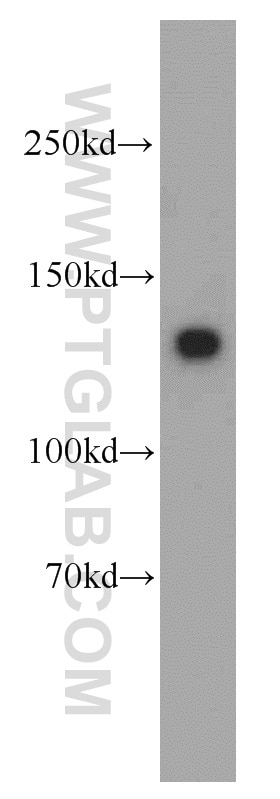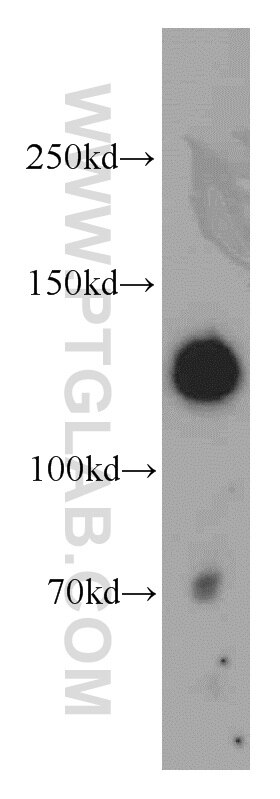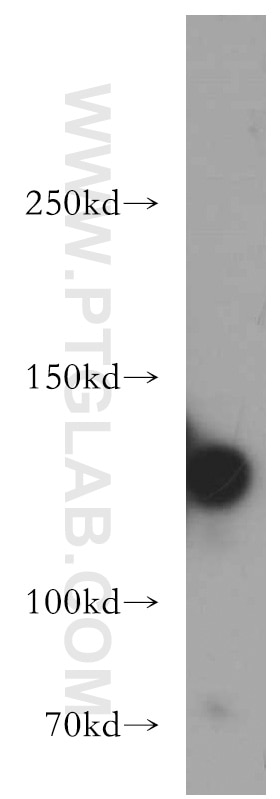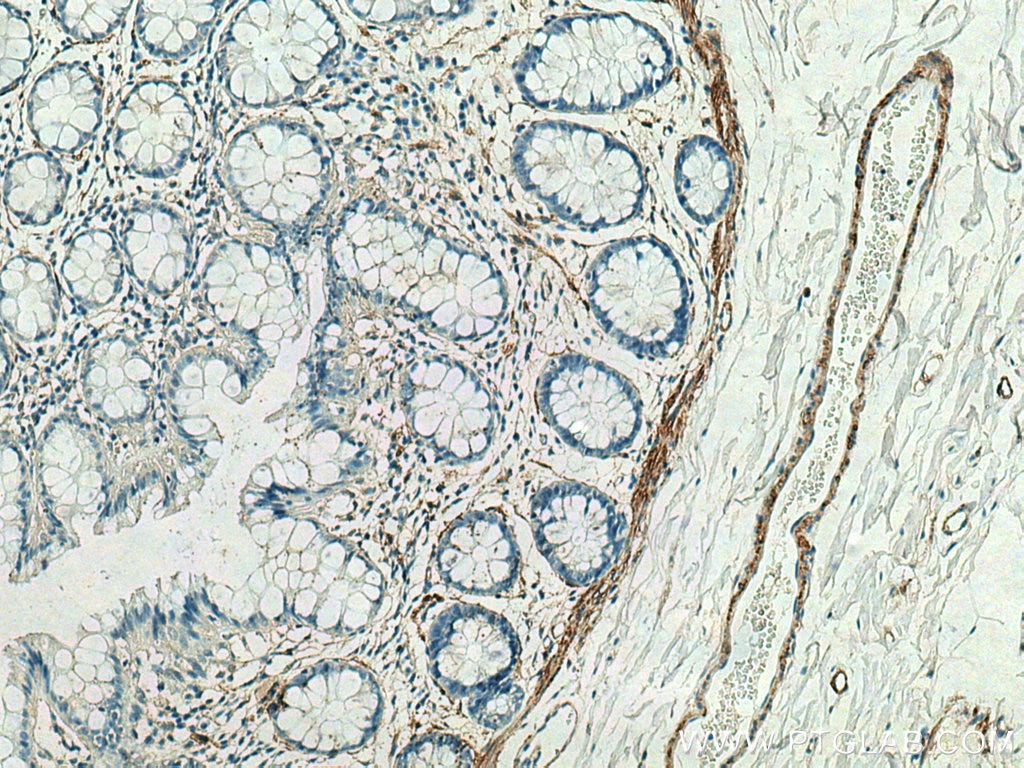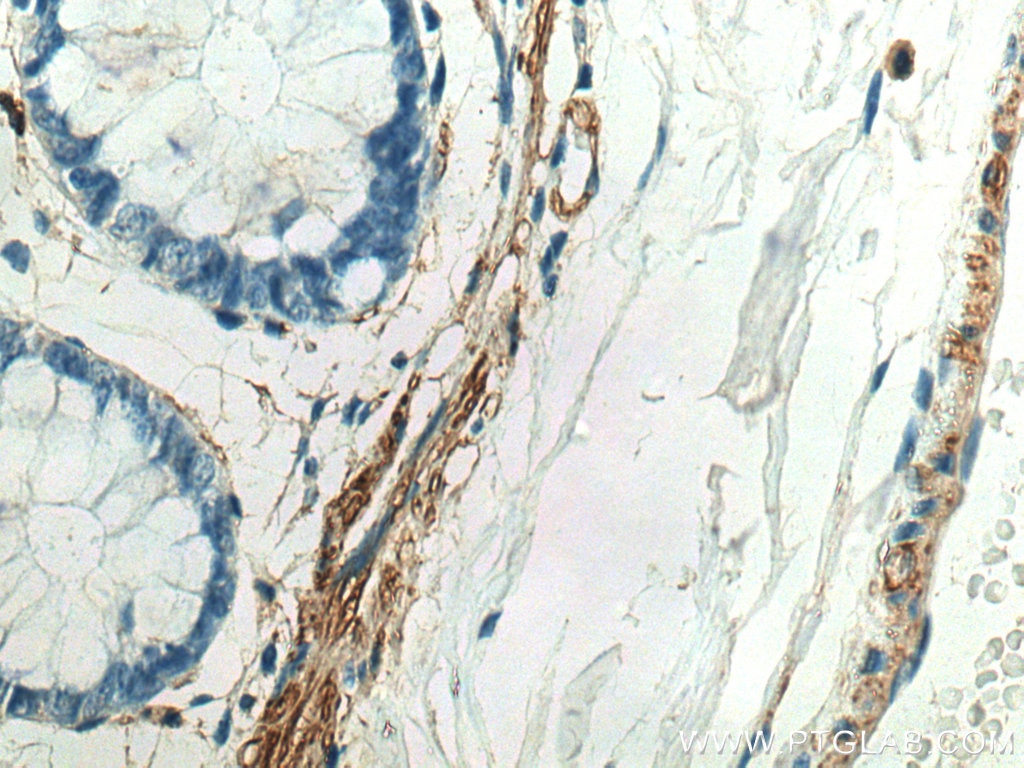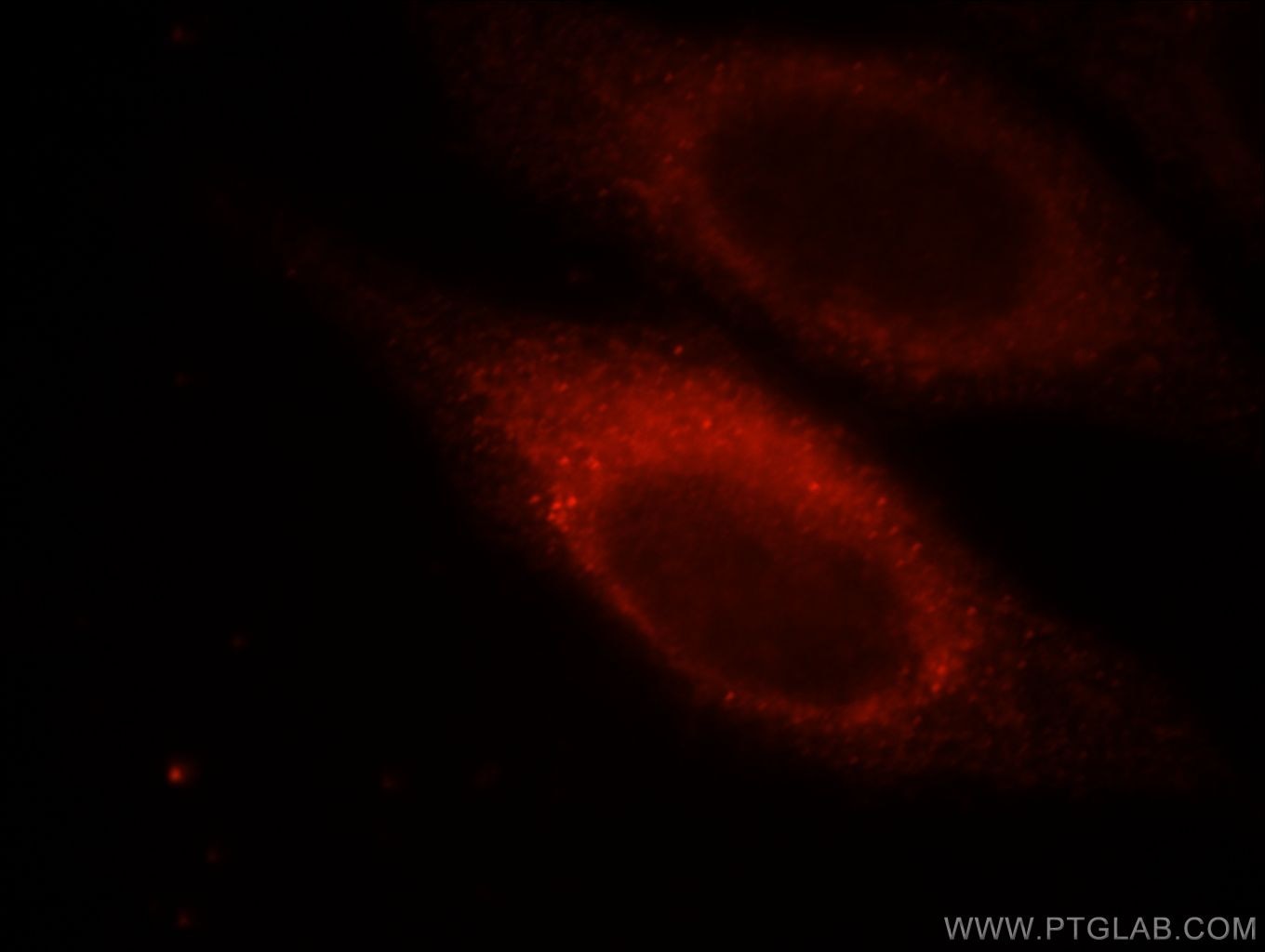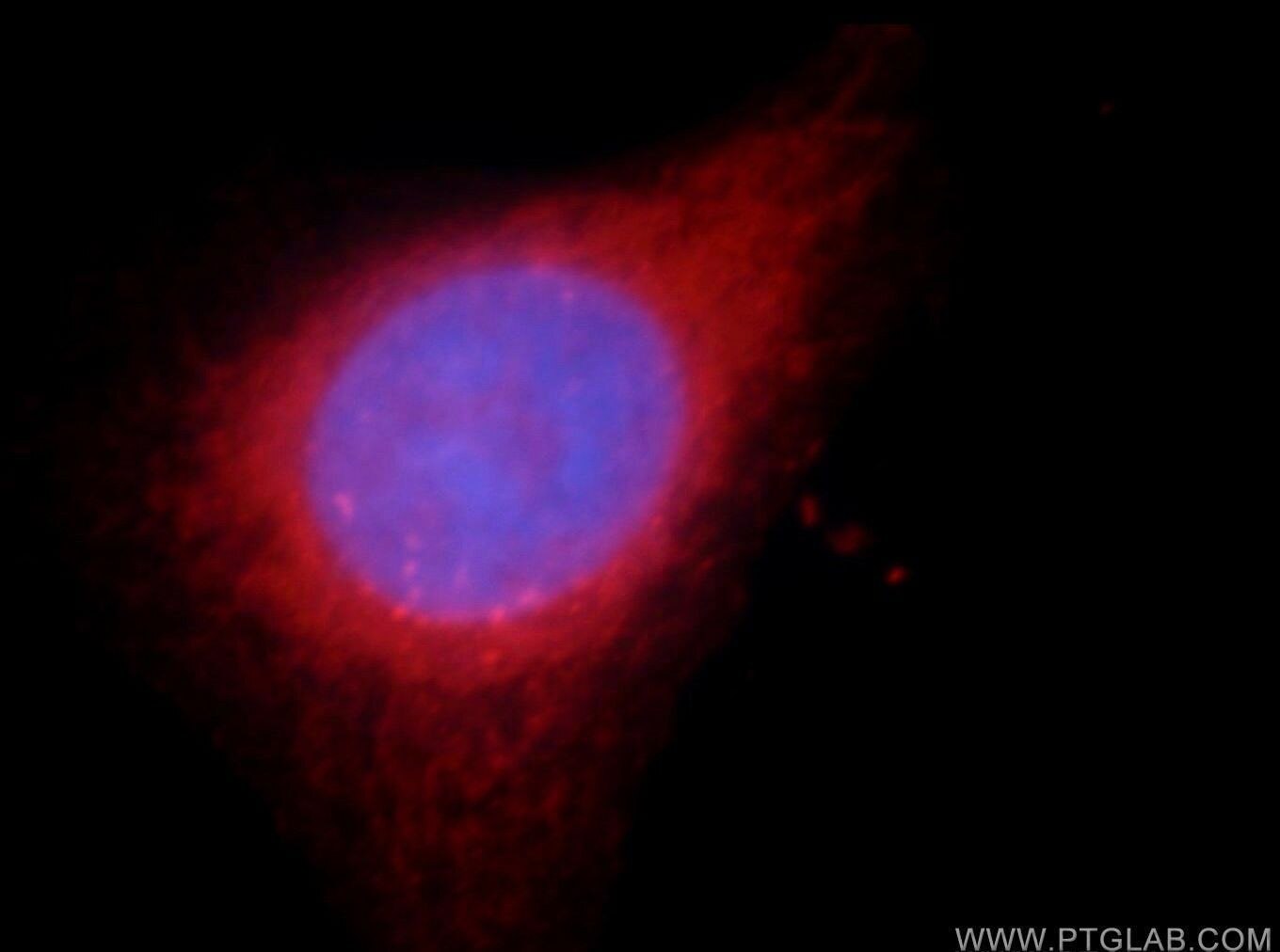MYLK Polyklonaler Antikörper
MYLK Polyklonal Antikörper für IF, IHC, WB, ELISA
Wirt / Isotyp
Kaninchen / IgG
Getestete Reaktivität
human, Maus, Ratte und mehr (2)
Anwendung
WB, IHC, IF, ELISA
Konjugation
Unkonjugiert
Kat-Nr. : 21642-1-AP
Synonyme
Galerie der Validierungsdaten
Geprüfte Anwendungen
| Erfolgreiche Detektion in WB | Maus-Uterusgewebe, Maus-Dickdarmgewebe |
| Erfolgreiche Detektion in IHC | humanes Kolongewebe Hinweis: Antigendemaskierung mit TE-Puffer pH 9,0 empfohlen. (*) Wahlweise kann die Antigendemaskierung auch mit Citratpuffer pH 6,0 erfolgen. |
| Erfolgreiche Detektion in IF | HepG2-Zellen, HeLa-Zellen |
Empfohlene Verdünnung
| Anwendung | Verdünnung |
|---|---|
| Western Blot (WB) | WB : 1:500-1:2400 |
| Immunhistochemie (IHC) | IHC : 1:200-1:800 |
| Immunfluoreszenz (IF) | IF : 1:10-1:100 |
| It is recommended that this reagent should be titrated in each testing system to obtain optimal results. | |
| Sample-dependent, check data in validation data gallery | |
Veröffentlichte Anwendungen
| WB | See 14 publications below |
| IHC | See 3 publications below |
| IF | See 4 publications below |
Produktinformation
21642-1-AP bindet in WB, IHC, IF, ELISA MYLK und zeigt Reaktivität mit human, Maus, Ratten
| Getestete Reaktivität | human, Maus, Ratte |
| In Publikationen genannte Reaktivität | human, Affe, Hausschwein, Maus, Ratte |
| Wirt / Isotyp | Kaninchen / IgG |
| Klonalität | Polyklonal |
| Typ | Antikörper |
| Immunogen | MYLK fusion protein Ag16306 |
| Vollständiger Name | myosin light chain kinase |
| Berechnetes Molekulargewicht | 1914 aa, 211 kDa |
| Beobachtetes Molekulargewicht | 135 kDa |
| GenBank-Zugangsnummer | BC113456 |
| Gene symbol | MYLK |
| Gene ID (NCBI) | 4638 |
| Konjugation | Unkonjugiert |
| Form | Liquid |
| Reinigungsmethode | Antigen-Affinitätsreinigung |
| Lagerungspuffer | PBS mit 0.02% Natriumazid und 50% Glycerin pH 7.3. |
| Lagerungsbedingungen | Bei -20°C lagern. Nach dem Versand ein Jahr lang stabil Aliquotieren ist bei -20oC Lagerung nicht notwendig. 20ul Größen enthalten 0,1% BSA. |
Hintergrundinformationen
MYLK(Myosin light chain kinase) is also named as MLCK, MLCK1, MYLK1 and belongs to the protein kinase superfamily. It is a key enzyme in muscle contraction. Its activation is sufficient to enhance paracellular permeability and is required for tight junction barrier regulation in response to Na+-nutrient cotransport, inflammatory cytokines, or pathogenic bacteria(PMID:20404178). The expression of smooth muscle MYLK is tissue-specific. Smooth muscle MYLK generates three different proteins, long MYLK, short MYLK, and telokin. The 130-kDa smooth muscle, or short, MYLK (130 kDa) is expressed in smooth muscles. It has 8 isoforms produced by alternative splicing and alternative initiation and our anti-MYLK antibody can recognize these isforms.
Protokolle
| Produktspezifische Protokolle | |
|---|---|
| WB protocol for MYLK antibody 21642-1-AP | Protokoll herunterladen |
| IHC protocol for MYLK antibody 21642-1-AP | Protokoll herunterladen |
| IF protocol for MYLK antibody 21642-1-AP | Protokoll herunterladen |
| Standard-Protokolle | |
|---|---|
| Klicken Sie hier, um unsere Standardprotokolle anzuzeigen |
Publikationen
| Species | Application | Title |
|---|---|---|
Research (Wash D C) The Mechanics of Tumor Cells Dictate Malignancy via Cytoskeleton-Mediated APC/Wnt/β-Catenin Signaling | ||
Mucosal Immunol Transmigrated neutrophils in the intestinal lumen engage ICAM-1 to regulate the epithelial barrier and neutrophil recruitment. | ||
Int J Biol Sci Aryl Hydrocarbon Receptor Activation Modulates Intestinal Epithelial Barrier Function by Maintaining Tight Junction Integrity. | ||
FEBS J Dihydroartemisinin counteracts fibrotic portal hypertension via farnesoid X receptor-dependent inhibition of hepatic stellate cell contraction. | ||
Front Med (Lausanne) Depiction of Aging-Based Molecular Phenotypes With Diverse Clinical Prognosis and Immunological Features in Gastric Cancer. | ||
Metallomics Lanthanum chloride causes blood-brain barrier disruption through intracellular calcium-mediated RhoA/Rho kinase signaling and myosin light chain kinase. |
